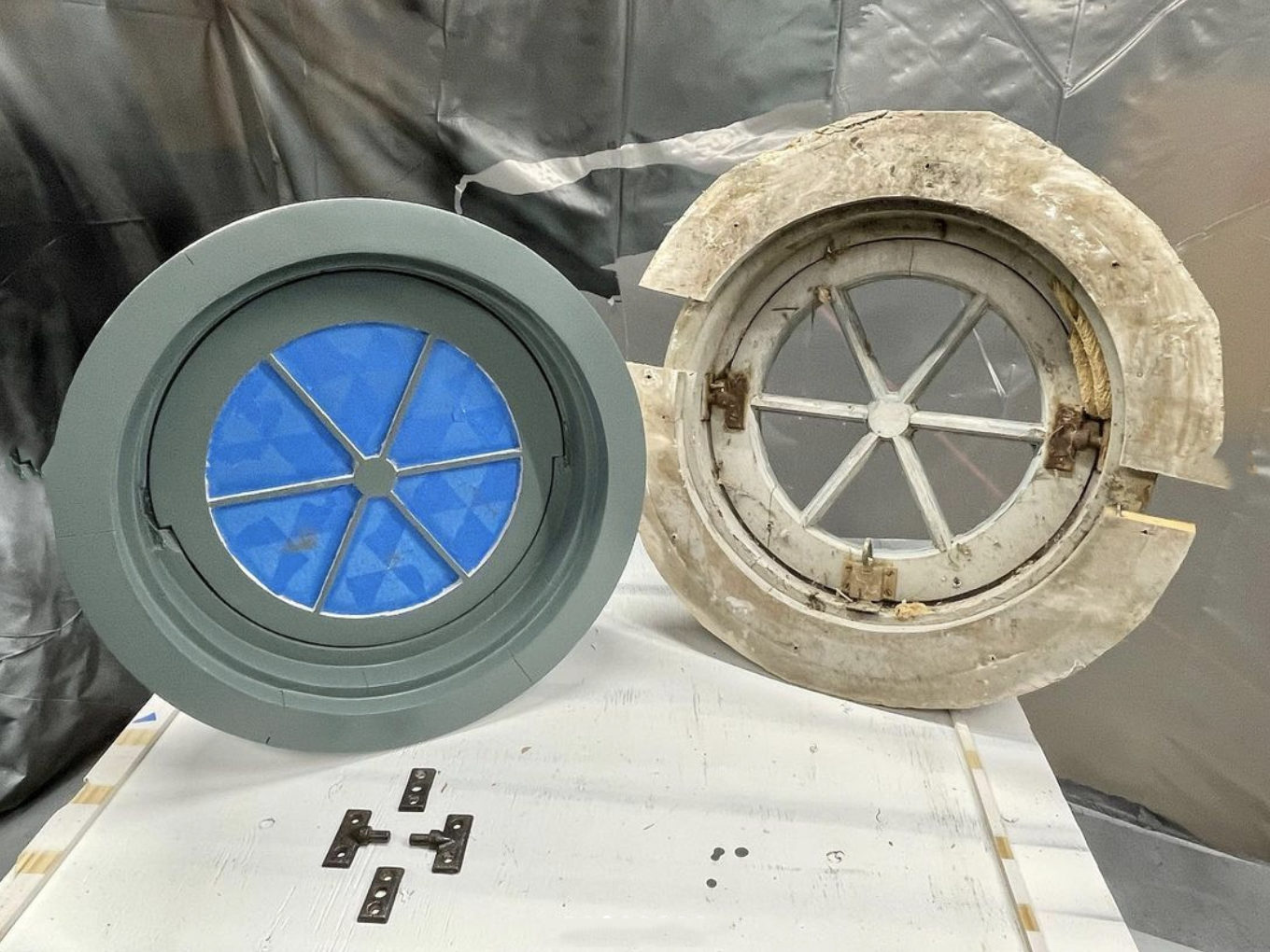Restoring and replacing windows are two distinct approaches when it comes to preserving the architectural integrity of a building.
Restoration involves carefully repairing and refurbishing existing windows by employing specialized techniques and materials. This method aims to retain the original design, craftsmanship, and historical significance of the windows, maintaining the building's authenticity. The restoration process begins with a thorough assessment of the windows' condition, identifying areas that need attention. Skilled artisans then meticulously repair any damaged components, such as deteriorating frames or broken glass panes, often using traditional woodworking and glassmaking techniques. Restoration not only preserves the aesthetic charm of the building but also respects the architectural and historical significance it holds. By retaining the original windows, the building's connection to its past remains intact.
Before: Leaded art glass sashes
After: Restored the old glazing and reinserted it into new tilt-able frames from Norwood Windows and Doors.
On the other hand, replacing historical windows involves removing the original windows and installing new ones that replicate the original style. This approach may offer improved energy efficiency and functionality, as modern materials and technologies can be utilized. Building owners opting for replacement may consider factors such as insulation, soundproofing, and ease of operation.
Before: Triple Hung Weight and Chain Window
After: Triple Hung Weight and Chain Window
Ultimately, the choice between restoration and replacement depends on the specific needs and goals of the building owner, while considering the importance of historical preservation. Both methods have their merits and drawbacks, and careful consideration must be given to the long-term impact on the building's historical significance. It is essential to strike a balance between preserving the architectural integrity and incorporating modern advancements. With proper research, expert guidance, and respect for the building's past, building owners can make informed decisions to safeguard our rich architectural heritage for future generations.





